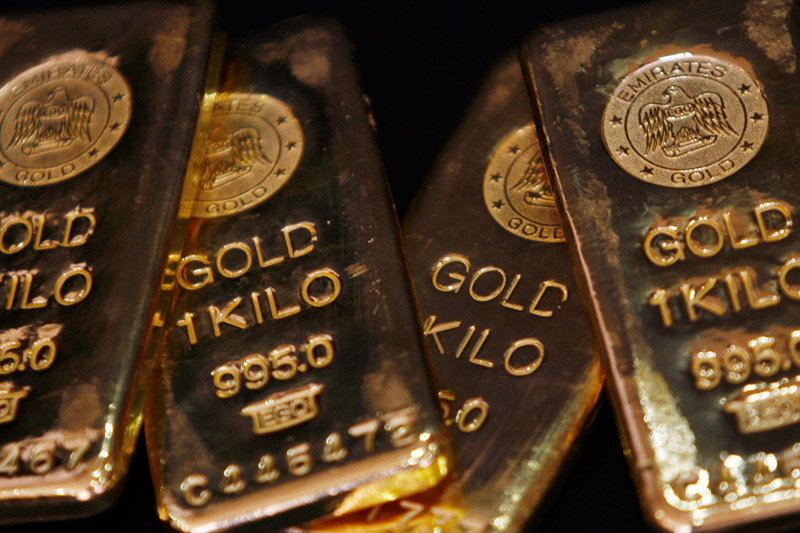Investing.com - Gold fell further in Asia on Wednesday as China consumer prices gained at a faster pace than seen in February and ahead of an upcoming European Central Bank review of interest rates.
Consumer prices in China rose at a faster pace than expected in February, setting the stage for a tighter corridor to ease monetary policy in the face of slowing growth.
In China CPI for February rose 1.6%, above the gain of 1.1% expected month-on-month for a year- on-year pace of 2.3%, well above the 1.9% seen. Producer
price data fell 4.9% drop year-on-year as expected.
On the Comex division of the New York Mercantile Exchange, gold for April delivery fell 0.55% to $1,250.50 a troy ounce.
Silver futures for March delivery fell 0.68% to $15.280 a troy ounce, while copper futures for March delivery dropped 0.22% to 2.229 a pound.
Earlier this week, China reported that exports in February slumped by 25.4% on an annual basis, suffering their worst monthly decline since the Financial Crisis. China is the
world's largest consumer of copper, accounting for more than 40% of the world's total.
Earlier in Japan, CGPI data showed a 0.2% fall, less than the 0.3% drop seen in February month-on-month and a year-on-year decline of 3.4%, matching
expectations.
As well, the Reserve Bank of New Zealand Thursday cut the official cash rate 25 basis points to 2.25%, and signaled further easing may be needed to ensure future
inflation settles near the middle of the target range.
In Australia, the MI inflation expectations rose 3.4%, a dip down from 3.6%.
Overnight, gold closed slightly lower on Wednesday, amid rallies in global equity markets, dampening the appeal of rhe safe-haven asset ahead of a critical meeting by the European Central Bank's Governing Council.
Gold extended losses from the overnight, Asian session as crude rallied by more than 2% in European afternoon trading, erasing some of its losses from Tuesday's sell-off. The
rebound was triggered by reports out of Saudi Arabia, where sources told Reuters that the kingdom is looking to procure loans between $6 and $8 billion in an attempt to stave off a
budget deficit that reached as high as $100 billion last year. The report fueled speculation that Saudi Arabia could consider further concessions with OPEC and Non-OPEC
producers in an effort to boost oil prices above $50 a barrel.
Meanwhile, stock markets worldwide moved higher in anticipation of the adoption of a wave of stimulus measures by the ECB's Governing Council at Thursday's closely-watched
meeting.
The ECB is widely expected to approve further easing initiatives as a means for bolstering economic growth throughout the euro zone and staving off inflation. When the central bank last met in January, it held its benchmark interest rate at a record-low of 0.05. The ECB could also lower its deposit and margin facility rates, while increasing the scope of its €60 billion a month bond buying program.
In the U.S., wholesale inventories rose by 0.3% in January, increasing by the highest level since last June and halting a three-month streak of negative moves. Analysts expected to
see a slight decline of 0.1% for the month. As a result, the inventory to sales ratio fell by 1.3%, marking its fourth consecutive monthly decline.
